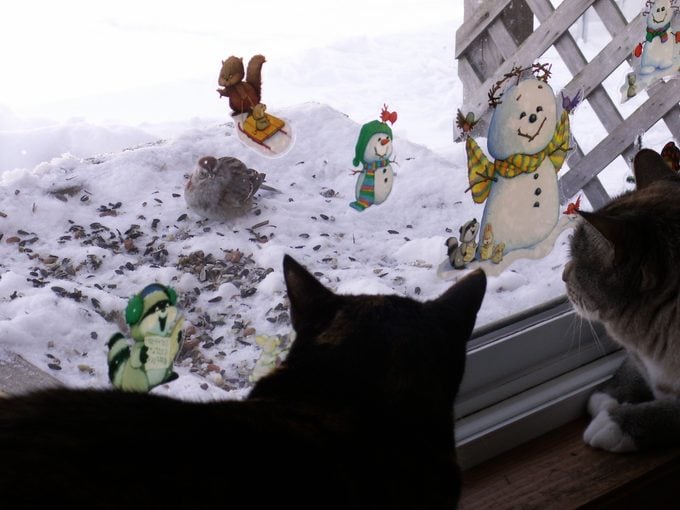How to Keep Cats From Killing Birds
Updated: Jan. 30, 2024
If you own a cat, keep it indoors to protect the birds. Learn how many birds cats kill each each year, and how to keep cats from killing birds.
Cats are one of the most beloved pets in the country. Anyone who owns a cat probably isn’t surprised to learn that over 40 million U.S. homes include cat residents. But what does surprise many cat owners is that their pets are one of the biggest threats to birds.
Studies confirm that house cats, including those well fed at home, are responsible for the deaths of millions of birds every year. This contributes to the decline in some bird species, which doesn’t sit very well with birders. So it’s vital to be a responsible pet owner and learn how to keep cats from killing birds.
Check out 5 ways to create a bird-safe backyard.
On This Page
How Many Birds Are Killed By Cats?
Dr. Stanley Temple, a professor of wildlife ecology and conservation at the University of Wisconsin-Madison, completed a 4-year study on this topic with his colleague, John Coleman. They looked at the impact free-ranging domestic cats have on rural wildlife. By radio collaring many farm cats, the researchers found that in Wisconsin alone, cats kill at least 19 million songbirds and 140,000 game birds annually. Surveys from Cornell Laboratory of Ornithology confirm similar results.
How to Keep Cats From Killing Birds

Studies like these recommend cat owners keep their felines indoors at all times, but this isn’t always convincing. Cat owners argue that their pets aren’t content to stay inside. As a cat owner, I understand this concern. If you have a cat that is used to being outdoors, then it will show signs of wanting out.
Perseverance pays off, though. It could take days or weeks, but eventually your cat will adapt to its pampered life indoors. I know people who have retrained their cats to stay indoors, and without exception, they are delighted they made the change.
Starting with a kitten makes it easier. The cats that have shared my life have all been kept indoors from the start, and they’ve never shown the desire to go outside. Some people have had success walking their feline friends with cat leashes and harnesses, but you must make sure your cats are closely supervised at all times.
How Cats Can Safely Watch Birds
If there is any negative aspect to keeping a cat indoors, it’s that they can get bored. You can easily cure the boredom by providing them with entertainment that is safe and natural. Cats and birds don’t have to be a bad combination – as long as all the cat is doing is watching the birds! You can even install a window perch for them, or place a cat tree near the window.
Cats can still satisfy their stalking instincts by watching birds from indoors without going out to kill or injure them. And once you start watching the fascinating antics of backyard birds, you’ll want to protect them, too. You’ll cater to the birds’ needs and provide endless entertainment for your cat. At the same time, you’ll pick up a new hobby for yourself.
It’s a hard decision to bring your outdoor cat inside, but start now. Then set up bird feeders, birdbaths and natural cover for birds outside your cat’s favorite window. Now your cat will be happy, and the birds will stay safe!
Next, check out poisonous plants every cat owner should avoid.
Why Trust Us
For nearly 30 years, Birds & Blooms, a Trusted Media Brand, has been inspiring readers to have a lifelong love of birding, gardening and nature. We are the #1 bird and garden magazine in North America and a trusted online resource for over 15 million outdoor enthusiasts annually. Our library of thousands of informative articles and how-tos has been written by trusted journalists and fact-checked by bird and garden experts for accuracy. In addition to our staff of experienced gardeners and bird-watchers, we hire individuals who have years of education and hands-on experience with birding, bird feeding, gardening, butterflies, bugs and more. Learn more about Birds & Blooms, our field editor program, and our submission guidelines.
Sources
- Texas Parks & Wildlife Department
- Cornell Lab of Ornithology
- Dr. Stanley Temple, professor emeritus at the University of Wisconsin-Madison
